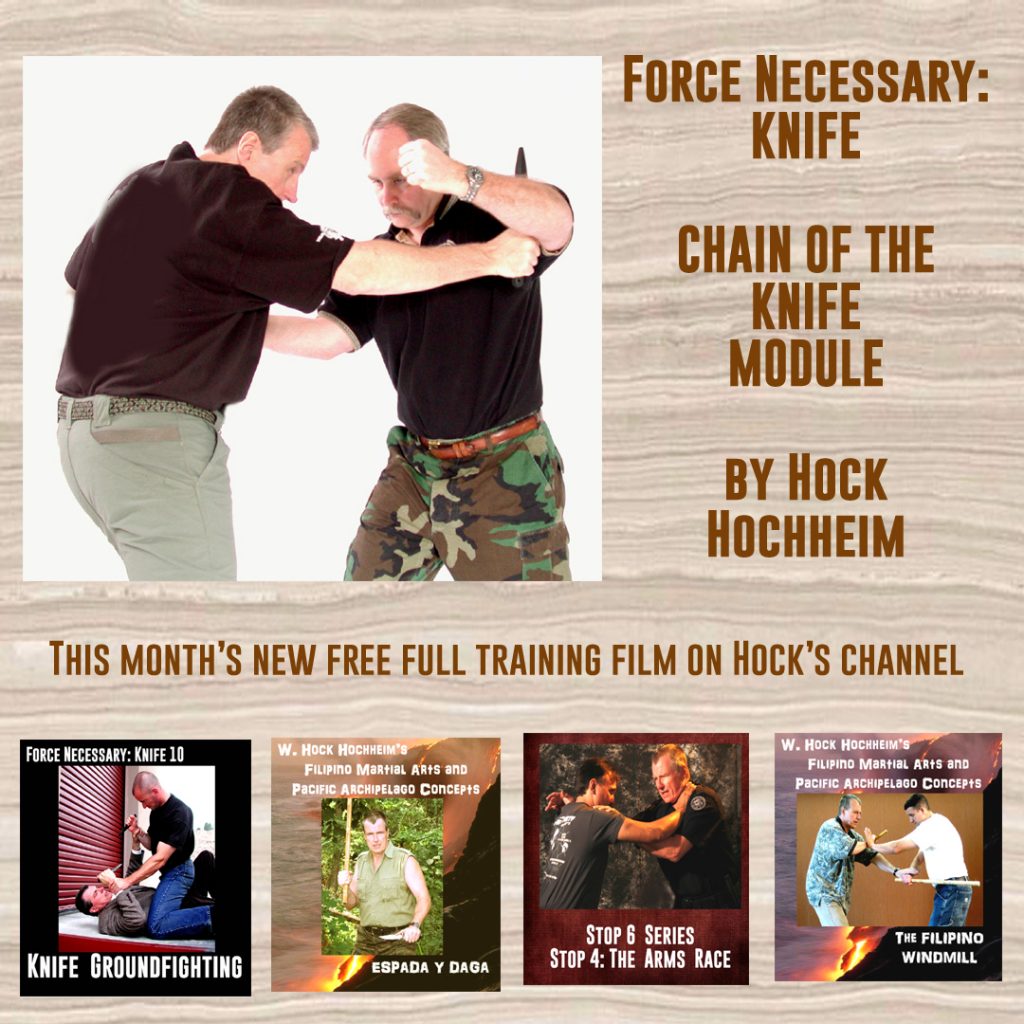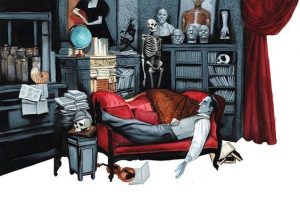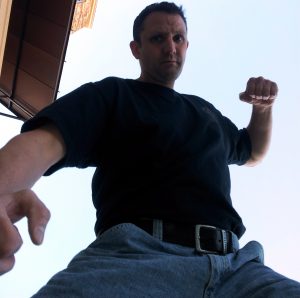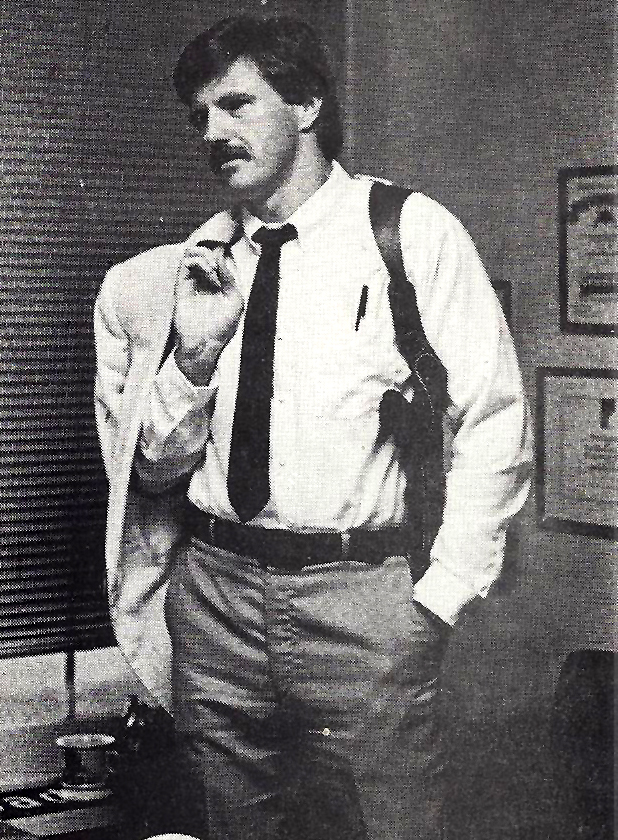 It was afternoon in August in the early ’80s. Egg-frying, Texas hot. That is to say that if you plopped a raw egg down on the street, it would sizzle in less than a minute or so.
It was afternoon in August in the early ’80s. Egg-frying, Texas hot. That is to say that if you plopped a raw egg down on the street, it would sizzle in less than a minute or so.
CID Sgt. Howard Kelly and I were cruising back into our city from a long day of looking around the countryside on the north side of our county. Looking over open, condemned land. Howard had caught a tip that a ring of car and truck thieves were stealing vehicles, stripping them down and discarding the remnants out on the vast fields and farmland very soon to be covered over by a major lake project. If we didn’t find the stripped vehicles soon, they’d all be under about a hundred feet of water. Howard had an idea about this location, and we hoped we might catch the ring at work. Who in the world would be working out in this laser heat, though? Still, we had to try.
We were in my assigned Chevy, but Howard was driving because he knew where he wanted to go. I had my hands up on dashboard to collect the air conditioning shooting it up the short sleeves of my damp dress shirt. No matter the heat, we usually had to wear a tie and a sport coat or a classic suit. Had to cover the gun back then. Kelly almost never wore a tie, or a jacket for that matter, and “they” (admin) were kind of afraid to tell him otherwise. He was the NCIS, Jethro Gibbs of the detective division, if you get my drift with this modern analogy.
We hit town, turned down Chester Ave and into the busy downtown area, talking about who knows what all, when a screaming man yelled over the police radio, “Jailbreak! Jailbreak! A whole floor is loose!” It was the county dispatcher. He was desperate.
“All available units report to the SO, ASAP.”
This news quickly went out over the city radio airwaves too. This did not sound like the usual “suspect bounding out of the first-floor, book-in room” and off to the city park north of the Sheriff’s Office.
Howard and I looked at each other. We were about 100 feet from the County Sheriff’s Office! He pulled onto the lot. We bailed, pulled our guns and ran into the building. We could see some city police cars zipping in, and some officers running across the field from the neighboring city PD.
We got inside and three county investigators were standing by the doors, guns up and at the ready, as the one main elevator descended from the cell floors above. What was this? Were escapees coming down? Howard Kelly and I pointed our guns at the doors too.
The elevator descended. Descended. The doors opened. On the elevator floor laid a jailer. Johnny Yale. He was howling and quaking. There was blood all over his torn shirt.
“He stabbed me!” he yelled. “They stabbed me. The whole third floor is loose!”
SO investigator Jim Wilson hit the kill switch on the elevator wall and knelt beside Yale. Lt Jim Neel also knelt.
“Who stabbed you?” Lt Neel asked over and over. “Who?”
“Crebbs! Crebbs did this. It’s a jailbreak up there. He turned everybody loose.” Yale yelped, almost crying.
“Everybody” on the third floor of the county jail was about 75 inmates.
“Block off the stairwells!” Jim Wilson ordered. Some deputies near there with shotguns and pistols, took positions.
Crebbs. I looked up at the ceiling, my .357 Magnum revolver in my hand. Crebbs. I’d put that raping, stabbing, psycho Martin Crebbs in this jail. I caught him. I put em in here. And now?
Now I’m gonna go upstairs…and I’m gonna kill him.
<<<>>>
Who is this Crebbs? How did I catch him? Why did I think he needed killing?
He was Martin J. Crebbs. Years ago, back in the ’70s as a patrolman in Texas, I’d heard of a rape case from station-house gossip and crime updates. A woman had been awakened in her bed by an intruder. The intruder controlled her with one of her own kitchen knives he’d collected from her counter on the way to her bedroom. She was raped at knife point in her bed. Then she was abducted to another house and tied up and raped again. Held for hours, she escaped. Our detective squad caught this teenager, also a known burglar. He was convicted and sent to the Texas Pen. Somehow, don’t ask me how, perhaps his age? Perhaps the trying times of overcrowded penitentiaries? He was released on parole. The man’s name was Martin J. Crebbs.
Then, there was another home intrusion rape in the neighborhood, and a series of aggravated robberies and burglaries throughout our city and in North Texas, and by this time, I was a detective.
May 19 Paroled
June 12 Aggravated robbery
June 12 House burglary
June 20 Aggravated robbery
June 20 House burglary
June 20 House burglary
June 20 Attempted rape
June 23 Attempted rape/home invasion
June 24 House burglary
June 26 Aggravated robbery
June 26 Aggravated robbery
June 30 House burglary
June 30 House burglary
July 1 House burglary
July 4 House burglary
July 5 House burglary
July 5 Aggravated rape
July 8 Aggravated robbery
July 12 House burglary
July 12 House burglary
July 14 Aggravated rape
Other crimes too…
Also, I might mention that not all of these crimes listed were within our city limits. Some occurred outside the city, in the county and in the counties north of us. In the 1980s we were not in “lightening” touch with each other as we are today. It would take days, even weeks, maybe even a month or two before regional crime patterns over multiple jurisdictions could be recognized and organized.
Where did I come in? July 14. The a.m. hours of. There was a pool of detectives in our squad, all taking general assignments and some of these crimes were routinely spread out among us.
I happened to be the “detective on call” so I was summoned to an old house on the northeast side of the city in zero-dark-30 hours of the 14th of July. A home invasion, rape case. Crime scene specialist, Russell Lewis was also dispatched. In route to the house, I was informed that the victim was rushed to the hospital and with the crime scene in Russell’s expert hands, I turned off my path to speak with the victim and oversee the rape kit process. At the hospital, I learned what I could from this poor exhausted, bruised woman, I’ll just call her “Judy” here, before she was rolled into an examination room. I left Judy with a patrolman to gather info for the basic, crime report. Judy had a good friend who quickly met her at the hospital, as well as the ever-handy “Friends of the Family,” a group of female counselors we used to help rape victims. Judy, the friend and the counselor promised they would all be at the police station by about 11 a.m. for a detailed statement.
By 6 a. m., I was at the house. Russell and I had to swap stories to really know how to scour the residence, yard and area again. The open kitchen window of the older, wood framed house, the big kitchen knife (from the victim’s kitchen drawer) and the bed left in total disarray, and the strips of cloth used to tie her spread hands and feet to the bed frame…well…they all told much of the overall story. The three-hour ordeal.
We stepped through the yard and with the help of the rising, welcome, dawn light and with our giant flash lights, we saw four, dry, Marlboro cigarette butts by the doghouse (there was no dog) in the yard. We collected them. I found another cigarette butt by a big tree in the yard. Another place to hide and watch from? Russell photographed and printed. We carefully folded up the sheets and pillows hoping for fluid stains and head and pubic hair and so forth. Was anything stolen or missing? I wouldn’t know until the victim could return to her house and take stock. You never know how fast you might need this info, and the first few days are a thirsty rush for intelligence.
By mid-afternoon, I knew a few things. The suspect was young, white male, 20s maybe, long blond hair. He surprised Judy when she was in bed. He had one of her big kitchen knives. He treated her “like a candy store,” as she described it. He brandished the knife until she was tied up and even after, at times, while she was tied. The tip was at her neck.
He told her as he left, “Don’t bother calling the police. They’ll never find me.”
Forty something years later as I type his last here, his words still burn my stomach and piss me off, not unlike when I heard them the first time.
Well, guess again, dipshit.
Judy, nor anyone she knew, smoked cigarettes, least of all Marlboro cigarettes. The presence of such butts in the yard was mysterious to her. Perhaps we could run some successful saliva tests on them? She said she’d looked over her house and thought she’d lost one piece of jewelry. It was a customized piece. I learned she was an art student, and I asked her to draw the suspect and draw that customized piece of jewelry. She did, and man! Did that come in handy later.
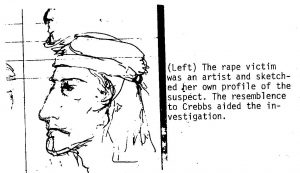
I started a neighborhood canvass around dinnertime on the 14th, looking for any and all information about people, cars and suspicious things.
That began an amassment of suspects. One of Judy’s next door neighbors was a parolee, who had killed is wife in the ’60s, and was a known “window-peeper.” Another “weird” guy lived a block away, the neighbors told me. Plus, we had an occasional “butcher-knife” rapist working that side of the city for years, but he was a little older and always brought his own butcher knife. Neighbors reported their usual, suspicious “hippies.” One of these “weird hippies” was wanted for assault. I wasted a day running him down and arrested him inside a college night club. I quickly cleared him of this crime.
Russell Lewis checked in with me to report the fingerprints were smudges and not comparable. He sent other evidence off for testing.
Meanwhile, I’d also caught “talk” of this Martin Crebbs’ parole, once again from general “cop gossip.” I cannot tell you how important just gossip and talk was and is with fellow, area investigators, especially back in those non-tech, days. When on day shift, after the morning crime briefings, a bunch of us would go eat breakfast at a series of restaurants. We, the county and the state investigators would congregate, talk smack, hunting, sports and oh yes…crime! Some of us on evening shift would still drive in and eat breakfast for this. Ignorant police supervisors and bean counters who’d never served as investigators, would oft times complain about this “laziness.” But, they were just plain ignorant and frankly, pains-in-the ass.
At one breakfast, someone from the state, warned us to watch out for, “Hey, a crazy somabitch, Martin Crebbs was paroled and he is a little psycho, crime machine. A robber and a rapist. He’s got relatives in this county and up north in Crisco.”
So, I looked into Crebbs and contacted his state parole officer in Crisco County. After this phone conversation, I could see it deserved a drive north to look at his file, which the officer said was thick, and always a pain to fax back then. Faxes were a bit foggy to read especially if you received copies of copies. Better and quicker to make the 90 minute drive.
Once in the state building in Crisco county, I sat down with the Crebbs’ file. The parole officer said that in just the few short weeks Crebbs had been on parole, he was already a growing problem. He lived with his parents in a rural area in Crisco county. His picture matched the suspect description and Judy’s drawing. Some of his prior rape conviction details did match those of Judy’s crime, but still, many rapists share common denominators. Had robberies increased since his release? Yeah. Burglaries? Well, yeah. But they come and go. Maybe up here in Crisco too? I took one Polaroid photo of Crebbs from the file, and collected some copies of ID data.
My next stop was the Crisco County Sheriff’s Office where I met CID Captain David Bone. Bone and I had worked together a bit in the past. Bone was about 6’5”, a power-lifter, former Texas Tech lineman, ex-rough-necker/oil field worker and smart as a whip on fire. What little we had and knew about computers back then, was already Bone’s new interest and his specialty. If I ever build a Dirty Dozen, police force, Bone will take up two slots. He had a very simple business card that had two things on it – the word “BONE” in the center in capital letters, and his phone number in the lower right. Not Captain, not Sheriff’s Office, just “Bone.” If you got one of those stuck in your front door, that Bone had been there looking for you? And you’re a shady character? You’d better just pack up and head on out to Mexico.
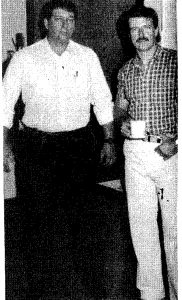
“Martin Crebbs!” Bone said to me. “I am right this instant, looking at him for an armed robbery of a convenience store.” South part of the county. I need to talk to the clerk. Let’s go.”
Go we did. I climbed into his sedan and took the front seat, passenger side. I felt like a small child there. Bone was such a giant that he’d removed the front seat and welded a new foundation for it, moving it back a few more inches than factory spec, so that he could fit his giant self behind the wheel and work all the pedals. So, though my own 6’3” self felt like a kid in there. I drove his car once on another case we worked and could barely reach the steering wheel, and I needed a Dallas phone book to sit on. But, I digress. Back to the case….
The robbed county store was not that far from the Crebbs’ family house. The owner himself was robbed, and he thought the getaway car he spied parked up the road from the store was familiar looking “Seen it around,” he said.
The masked man with a gun reminded him over-all of someone in the area, but he couldn’t say for sure whom. The man said that the .45 pistol aimed at him was old and even “rusty-looking.”
Right then I recalled that we too in my city, had two armed robberies where a suspect held an old .45 pistol. I realized the suspect at home did match the overall shape and size of this Crisco crime.
Back at the Crisco Sheriff’s Office, Bone and I made a plan. We would take turns surveilling the Crebbs’ family house and if that dried up in a day or two, we’d march up to the house and question everyone. As Howard Kelly would say, “When you hit a brick wall, go shake the tree. That might not make sense, a “wall” and then a “tree.” But it meant that when all leads fail, go shake up, and mess with the suspects. Sometimes they react in a beneficial way. What have you got to lose? You never know what will fall out of the wall…er, I mean…the tree.
The next day I asked Judy to make a return visit to the P.D. I showed her a photo line-up with Crebbs and with similar males with blond hair. Since the rape occurred in darkness, she just couldn’t be sure enough to pick Crebbs out. She gave me a maybe on Crebbs. I can’t work with a maybe.
I did a “shift” on the Crisco county house. Bone did a shift and he had a deputy do one too. We never saw Crebbs, and only observed the comings and goings of a large rural, family. Nothing
interesting happened. Not even a sighting of Crebbs.
We decided to do that “march” and “tree-shaking” after three days. We drove up the dirt road to the two-story house and knocked on the door. What we found was a mad mom, a mad dad and a mad uncle. Not mad at us. Mad at Martin! We all sat down in their large living room.
“I know that little shit is robbin’ places! I know it!” the dad exclaimed. “The day after he got out of jail, his little sister took him to Boydston, to a pawn shop, and he bought a gun.”
“What kind of gun?” I asked.
“It’s an old Army pistol,” he said. “I’ve seen him with it.”
“By old you mean…”
“Like World War II? An automatic.”
It was very common to call semi-automatic pistols, “automatics” in those days.
“He is a hangin’ out with that Steve Spitz from Sherman. He’s trouble,” the mom said.
Bone nodded and said, “Heard of him.”
“I’ll bet you have. He’s a snake in the grass,” the dad said.
“They drive around in Spitz’s car,” the mom said. “Some kind of Camaro, dark red. It ain’t his, it belongs to some poor girlfriend of his.”
We collected various bits of other information, like the little sister’s name and birthdays. Cars. Etc.
Then Bone and I drove back to the Crisco Sheriff’s Office and we went straight to their records room. We looked up Spitz. Bone uncovered in the county files that both Spitz and Crebbs were roommates in their jail years ago under burglary charges. With the Spitz birthday on file, we ran his criminal history and drivers license info. We had mugshots. Spits had dark hair, Crebbs had blond hair.
Back home I collected all our recent armed robbery reports. I was not assigned to any of those robberies. One robbery was at the usual gas station combination convenience store.
According to a customer pumping gas who saw the robbers approach the store, one robber was masked, the other man was still donning his mask while running across the lot. This almost masked man had black hair. And the customer saw the man’s face before the mask slipped on. The robbery team got inside, pulled an “old” semi-auto gun and robbed the place.
Who was the witness pumping gas, the customer who saw the face? I scoured the report. The detective assigned to the robbery case had not found out, even after three weeks? I will only tell you that the detective assigned to the robbery was a slug, and I wasn’t surprised.
I drove to the store and working with the manager, looked over the credit card receipts from the crime date and time, hoping the guy didn’t pay for his gas with cash, but used a credit card.
He did use a card! He used a company card. With some long-distance phone calls, we found him, an Oklahoma truck driver. I created a photo line-up of similar white males, and I met this witness at a restaurant on the Texas/Oklahoma border. He actually picked Steve Spitz out very quickly.
The next day, I got an arrest warrant for Spitz, and we spread the word all over North Texas.
Meanwhile, I contacted Texas Ranger Phil Ryan who worked the region including Boydston. I gave him the info on Crebbs and Crebbs’ little sister and asked him to find the pawn shop where the gun was purchased. Ryan was a great Ranger and I write about him often in my recollections. He would work a tractor theft as hard as a triple murder and within two days we learned all the details of the gun purchase. It was an old .45 caliber, semi-auto pistol.
Days later, my desk phone rang. It was Bone.
“We got Spitz,” Bone said. “A state trooper found him driving on Highway 8. Alone in his car. Nothing in the car. I’ll wait for you to get up here, and we’ll talk to him.”
“I am on my way,” I said.
Spitz was a real punk, but he knew he was caught and he did talk in his hope for leniency.
“Cripps is crazy, man! He thinks he is Joe the Dope Dealer with drugs and Bonnie and Clyde, Clyde the robber. And he thinks he is Jack the Ripper.”
In just three weeks these idiots committed a crime wave of felonies with more plans on the Crebbs drawing board for supermarket robberies, raping lone convenience store clerks and Crebbs favorite – home invasions, but of families at night. They had even plotted a bank job. Police officers stumbling into these scenes would be taken hostage or shot.
“You know, it was all Crebbs. I…I wouldn’t do all that,” Spitz said.
Spitz was an emotional mess. Crying. Bulging veins. Pleading. We knew we would have to prove and re-prove everything he said, anyway we could.
I won’t bore you here with the skyscraper of paperwork this produced. And all this back in the day when we typed reports on typewriters, maybe electric, sometimes not, with carbon paper, and used expensive, copy machines when we could. But filing warrants and cases on 30-plus felony crimes was a paper puzzle. We did it, none the less, filing cases in three counties. Welcome to my world. Today, all this would be done by a task force. Back then, it was just me and Bone. (In case I forget to tell you later? Spitz took a 10-year plea bargain.)
We were informed by the angry relatives that Crebbs was still coming and going from the family house once in a while in another friend’s borrowed, two-door, light yellow Chevy. Bone drew up a search warrant for Crebbs’ room in his house, just in case, which we searched and turned up nothing.
Now, all we had left to do was find Crebbs and that gun. The word was out he was a wanted man. We were back to staking out the family house in plain cars. I was driving my personal Ford Thunderbird.
And then one afternoon after a few days, we saw him go by in the two-door Chevy. We pulled a simple traffic stop and an “under-the-gun arrest.” He tried nothing. He knew he was surrounded. Cuffed and stuffed, I took a quick look over his car. There in an open compartment in the console was a chain and a piece of jewelry. It looked familiar. It actually looked like the drawing Judy sketched of her stolen necklace. I walked back to my car and returned with my Polaroid camera. I snapped a photo of the console and the jewelry. I pulled the jewelry out. It matched Judy’s drawing perfectly. Her missing piece! The souvenir of a rapist. I stuck the picture and jewelry into my pocket.
Next, began one of the most unusual relationships I guess I have ever had with a criminal, and I have had many, from Narcs, to Cowboy Mafia-men to dopers and killers. Back at the Cisco jail, Bone and I sat down with Crebbs in an interview room. We read him his Miranda rights. He waived them. I think he was dying to talk and see what we had on him. At first, Crebbs denied everything and was only concerned with the evidence we had, trying to play all the angles he could. He yelled and swelled up, and pitched a fit of innocence. He called us crazy.
I pulled the chain and pendant from my pocket and held it up, the pendant swung like a hypnosis watch.
“You took this from a woman,” I said calmly.
His head shook slightly, just back and forth, not side-to-side, not yes, or no, and he almost smiled. Then I proceeded to tell him a list of what we had on him, step-by-step, to include a complete confession from Steve Spitz. Then I told him about the evidence the lab was working on. He listened intently.
“You’re good,” he said.
“No,” I said. “You’re just that bad.”
But actually, he was impressed with me and Bone. His whole demeanor changed, and he sat there and told us everything, almost as only an actor could, playing the part of psycho, talking about someone else, not him. He spoke in a passive, monotone voice. He did slightly giggle over some of the rape details. He bragged about the houses he “shafted.” He criticized his accomplice’s inadequate performances.
“Did Spitz lie about anything?” I asked.
“No, I don’t think so,” he said.
It was pretty clear we were dealing with a psychopath, who viewed the rest of us as mannequins to his passing fancy. Bone and I took long, separate written (actually typed) confessions from Crebbs. He was quite proud of himself and his…achievements.
Over the next few days, Bone and Crisco County kept Crebbs as they worked on paperwork and court appearances for the crimes in their county. Meanwhile with Judy’s jewelry and the confessions, I obtained a few more arrest warrants on Crebbs and pushed the local paperwork monkey further up the tree. By this time, Texas Ranger Weldon Lucas caught wind of all this and wanted to help out. In about a week, Weldon and I drove up to Crisco, served the warrants and transferred Crebbs to our jail in cuffs and a hobble.
Once he was ensconced in our jail, I visited him frequently and I took him out to cruise the city and further document the locations of his rape, robberies and burglaries. I never once talked down to him, and always treated him “normally.” And we talked about a lot of things other than crime. This is an important strategy for every detective to try. You either have this knack, or not. Now, this method of “questioning/interrogation” has been quite formalized by the FBI and now even for fighting terrorism.
Crebbs sat in the passenger seat of my car, cuffed around front to drink coffee and eat from drive thru, fast-food places. This was a treat for an inmate. I knew he would kill me in an instant, but I had a detective in the back seat right behind him that I could really trust and who would…seriously intervene. It was probably another detective in our squad, Danny McCormick back then, but I just can’t remember. I knew this was tricky and dangerous, but it was the confession game I was playing. A risk I knew I was taking. And I knew Danny would just shoot the son of a bitch, if Crebbs tried to kill me.
In the process of his first local court appearances, he was appointed an attorney, who immediately shut all this interaction down. This attorney, first-name Gary, was a sharp guy, and we were friendly adversaries, as I was with almost all local defense attorneys. Gary could not conceive the unusual mountain of evidence and confessions I’d obtained from Crebbs. Within a few weeks, I would have a sperm match with the rape kit and a saliva match on the cigarette butts from the yard. Solid, solid case. This surely looked like a major, plea bargain to all of us. When Crebbs was eventually transferred from our city jail to the county jail, he told our city jailer to tell me goodbye.
This had all the earmarks of a plea bargain indeed, but we had a new, go-getter, assistant district attorney I’ll call here “Hal Sleeve.” Hal craved the Crebbs prosecution. He asked me over for a meeting at the DA’s Office, and I expected a puzzle-piece, plan to bunch the crimes together into one big, plea bargain with a hefty jail term.
“I am going to start with the rape,” Hal said.
“Start?” I repeated.
“This guy is an animal, and we are going to try him one felony at a time.”
Okay. He’s the boss, and that is what we did. Sleeve really was one helleva’n attorney too, and he did quite a job.
So, within a few months, with Crebbs in our county jail with a “no-bond” the entire time, a trial eventually began. When I walked into the courtroom, Crebbs waved at me, and I nodded at him. Do you see what I mean by strange? When I was called to the stand to testify and Gary could not shake off any of the evidence we presented, especially the confessions I took from Crebbs, that I had to read aloud before the jury. I was dismissed. I had to walk past the defense table and Crebbs nodded at me again. Strange. I just fried him alive, and still he acknowledged me.
Crebbs got about 30 years in the Texas Pen for aggravated rape. But, the next trial date was set a month off, and Crebbs remained in his cell on the third floor of the county jail. And during that wait? Crebbs called a friend on a pay phone for a pick-up, escape vehicle for a planned date and time, took small pipes off of an exercise bike, sharpened one end of each, wrapped the other ends of the pipes with a small, hand towel, tied the towel with some string, and tried to kill a jailer named Yale with seven stabs. Yale fell screaming. Crebbs took the keys off of Yale’s belt. With the jailer’s keys in hand, he turned the whole 3rd floor of the jail loose, and they gained access to the office off the elevator. There were various staff weapons up in that office.
<<<>>>>
And now you know why on that hot, August afternoon, with jailer Yale screaming bloody murder on the floor of the elevator, and the SO in chaos, I stared at the ceiling, gun in hand, and wanted to kill Crebbs.
With the elevator sealed, with just a few moments ticked off, we made our move. There was one stairway to the 3rd floor. Me, Howard Kelly, a city patrol officer named Jim Tom Bush (who was a decorated Vietnam War sniper and now brandishing a shotgun) and Jim Wilson gathered at that doorway. Wilson opened the steel door, and we heard the raucous yells and crazed chants from above. With all our guns pointed upward, just me, Kelly, Bush and Wilson ran up the stairs. For some reason? No one else followed us up. I can imagine why.
Oh, you might think, “Now wait a minute”, isn’t this a job for SWAT?”
But back in those thrilling days of yesteryear, only places like Tokyo and Los Angeles had SWAT teams. Back then, we were the SWAT team. In my department the detective division was the SWAT team. Same with the County Sheriff’s Office. So me, Kelly and Wilson had been on quite a number of raids and actions. Patrolman Bush? Bush was just a routine bad-ass. (Many years later Bush became a leader on our SWAT team.)
We got to the big, vault-like office door on the 3rd floor, which lead to the cells. There was a window in the door, and we saw the inmates walking around, yelling, throwing stuff. Unlike modern jails with open pods, this jail was mostly a series of hallways and cells on either side, and some open, sitting and eating areas. Wilson unlocked the big door, shoved it open, and we marched in.
“Back in your cells or die!” we shouted, pointing our guns at everyone we could see. This was Texas in the ’80s and they knew that we were not bluffing. Mostly, they did return. Some were shoved.
“You cannot get out of this building. Get back in your cells!” we said.
I also was on the visual hunt for Crebbs. I couldn’t find him. I couldn’t see him. I ran down an empty hall to one of the day areas. I heard a voice. Angry, pleading. His voice. I turned the corner to see Crebbs on one of the pay phones. He was yelling at someone about his car ride escape. He held the shank in his hand. Jail keys hooked on his pants.
“HEY!” I yelled.
He turned. He dropped the phone. And pissed-off, stared at me. We were completely alone in this end of the wing. The ruckus in the halls seemed far away.
It was another one of those moments in my life. I could have shot him. Dead right there. No one would have doubted or questioned the action under these circumstances. Somehow I had this odd feeling that shooting him was just not enough. It was a gut feeling. I holstered my gun and walked toward him, pointing my finger, “Drop it! Drop it. Drop it.”
He didn’t. He didn’t. He didn’t.
He raised it as I got close, and we had a fight. I can’t specifically remember each step of this, but I beat him down pretty bad. He’d had a lit cigarette in his mouth, and I hit him there first, which was hard enough to make him drop the shank in his hand. After that? Confusing mess. When it was done, I picked him up off the floor and handcuffed him.
A deputy ran down the hall and shouted, “You okay?”
“Yeah, can you get that?” I motioned to the shank.
I marched Crebbs back down the hall as Kelly, Bush and Wilson and another deputy or two locked up the last of the loose inmates. I took Crebbs through the office, down the stairs and was sort of surprised how no one else had really joined us? No one else in the stairwell, until I got to the bottom, where some officers stood an anxious guard. Maybe they thought we would just take the floor office back, shut the office jail door, and only secure the office? I don’t know. I walked Crebbs past the Sheriff, past some of the detectives, officers and civilians congregating on the first floor hall.
The local news was already there, their office building a few blocks away. All solemn eyes were upon us. Maybe I had a bruise or two on my face. Crebbs did. He was bleeding. I took him into their CID offices, followed by some of the investigators, and sat him in a chair. Nobody cared about the blood.
“Yale?” I asked of the jailer when CID Captain Ron “Tracker” Douglas walked in.
“He’ll live.”
“He’s all yours. Let me get my handcuffs,” I said.
And some of the SO detectives stood Crebbs up, and we exchanged cuffs.
“I caught him on the pay phone. I’ll write you up a statement right away and get it back to you,” I told Tracker.
I needed out of there. Needed air. I walked outside. My car was still outside, and Howard Kelly could simply walk across the parking lot to the City PD. This was a county crime, and a county arrest. I didn’t need to do that usual ton of city paperwork. The county did. I just needed to type a statement. This whole thing took about 15 minutes? 20 minutes? From the second we heard the radio call of, “Jailbreak!”
I saw my car on the crowded parking lot. I could squeeze it out between all the emergency and news vehicles.
I was going to make my own little escape from the mayhem! I could of killed him. Coulda. Woulda. Shoulda. But I didn’t. I just didn’t. It just didn’t… play out that way. And, I did what I did, and I felt real funny about it. Kind of mentally sick in a body-chemical way I can’t explain. A hard to describe feeling. I just wanted to get to my office and type up a short, concise, statement.
I backed out of the parking spot, and then I saw in my mirror, Tracker Douglas outside running toward me and waving.
“Oh shit, what now?” I said to myself. I rolled down the car window.
“Hock. Crebbs said he wants to talk to you.”
“Talk to me?”
“Yeah. We need a statement, and he said he would talk only to you.”
They really didn’t need a statement. Yale was alive to testify about his attack. But to be thorough, a statement is always…nice to have. I pulled back in the parking spot and got out. Tracker and I made our way back to the CID offices.
We found an interview room with a desk, and they sat Crebbs in a chair, cuffing his wrist to the arm of a chair. A deputy with a shotgun sat outside the door.
I walked in, closed the door and sat on the desk. I said in an astonished tone, like two old friends talking, “What in the fuck happened up there?”
And he began and wouldn’t shut up. He told me everything and I mean everything. I got off the desk and sat in the other chair. He told me with the rape conviction and more trials coming, he realized his life was over and he had to escape.
“Well, the only chance you have for any kind of leniency is to explain all this in a statement. If you don’t get your voice heard, you’ll just be like a cool-blooded killer. An attempted murderer,” I said. “You know they won’t let you speak up in court. The prosecution will really tear you apart if you take the stand.”
“Yeah, I know,” he said. “Yeah, I’ll make a statement.”
Now, technically, Crebbs was still under the auspices of Gary the attorney. In some locales, this might shed a darkness over any statement Crebbs might give. But, on the other hand, he could waive his rights at any time, and offer a statement. So I went with that angle. If worse came to worse? They would just outlaw/dismiss the statement.
And so I began the statement process with Crebbs yet again. I got a standard confession form with the Miranda warnings on the top, and I began collecting a confession from Crebbs. We went line by line. When it was done, I told him, “Good luck,” and handed Tracker the confession. It had various details like who the getaway driver was supposed to be. And so, to my memory that was like the 23rd or so confession I had collected from Martin Crebbs. The last one, I had hoped. But oh, no. No.
The next morning, prosecutor Hal Sleeve called me. He wanted to know the details of the escape from my perspective. I told him. In those days, video tapes were a growing interest in the legal system and Sleeve had massaged the DA’s office budget into buying some expensive, camera equipment. He was a real advocate for maximizing the use of video in court from crime scenes to confessions.
“So, he confessed,” Sleeve said.
“Yeah,” I said.
“Would he confess again? I mean on tape? Could you get him to confess again?”
“I don’t know. Maybe. I don’t know. What would Gary say?”
“Gary’s on vacation for two weeks. Crebbs waived his rights. What can he say? He waived. Would he confess again,” Sleeve asked, “up on the scene. Would he walk you around the 3rd floor and explain what he did? Could you get him to do that?”
“Can you get an SO detective to do that?” I asked.
“You know he won’t do it for anyone but you. Go try, Hock.”
I didn’t work for the DA’s Office, but I kind of did, you know? We all do in this business, and the police chief and sheriff are really just anal retentive, hotel managers. And, as the old Al Pacino movie line goes, “Just when I thought I was out, they pull me back in.”
Sleeve set it all up. 1 p.m., the next day. Two days after the escape attempt. I went to the SO. Sleeve was waiting there for me. Their crime scene people and operators of the video equipment were at the ready. Tracker Douglas was also at the ready to facilitate. Crebbs was brought down to the same interview room and there we were again. Just me and him. He was surprised to see me. This was the kind of guy that, if you fight him? And you beat him? He respected you even more. And, after some conversation, like a damn salesman on cue, I reluctantly began my requested pitch.
“Listen, Martin, it would be a great service to this agency and all the other agencies to hear you describe how you did all this yesterday. You know it’s a new world with these video tapes. And a video like this would be helpful, also make it look like you were trying to help us, and fully cooperate. Show full cooperation. It might show the jury that you have some…you know, hope? Compassion? Whatever.”
I guess he had nothing better to do! Why not. His face was expressionless.
“Yeah, sure,” he said.
And we did. Uncuffed, he stood beside me, on the third floor, with all the hooting and hollering of a hot, un-airconditioned day in the county jail. I read his Miranda rights yet again on film. Maybe the 24th, 25th time? I don’t know anymore. He waived them again. I asked him to start explaining what happened. He walked us to the exercise area, showed us the particulars on the exercise bike where he got the two pipes for his shanks…showed us everything, right up to the point where he and we had our little, physical confrontation in that day room by the phones. I was wondering how he would handle that, describe that part of the tour? Just at this point, I asked him a question and broke his chain of thought.
Video done. I left again.
I got back to our station and sat down in Howard Kelly’s office, stretching out.
“Is it over?” Howard asked.
“I think that part is over. Now comes the rest of the trials.”
I didn’t see Crebbs for about 3 months until the next case came to trial. The jailbreak case was put atop the list in his crime wave. He was charged with Attempted Capital Murder with a Deadly Weapon. In the hall Gary the attorney looked at me, half-smiled and shook his head.
“I don’t know how you do it,” he said.
Meaning my conscience? I think I knew what he was talking about. Should I have waited for Gary to return two weeks before I questioned Crebbs? That whole protocol thing?
“He said he wanted to talk to me, Gary. They pulled me off the street to see him. Then he kept waiving his right to counsel.”
“And yet? I am still his counsel,” Gary said.
“And yet you are.” What else could I say?
In court, there were arguments for and against both the written and taped confessions. The judge ruled in the state’s favor and both confessions were admissible. I did a lot of testifying that week. The jailer testified. Sleeve’s great, closing argument was another patriotic, crowd pleaser. In the judge’s chamber, awaiting the jury verdict, Hal Sleeve was ecstatic. At one point he even put his head on my shoulder and said, “Thank you.”
Somewhere in the annuals of the county court evidence records, in a locker somewhere is that very strange video tape of Crebbs’ confession, taking us on a violent tour of a jail stabbing and mass escape.
Crebbs was convicted, received nearly a life sentence and following that, the prosecutors from various counties joined together for a big plea bargain. There were aggravated robberies, rapes, burglaries, drug charges…what a bundle. He wound up with over a hundred years to do.
Somewhere in all this, and I don’t remember how, nor is it in my notes, I somehow recovered that rusty old “Army” gun. Crebbs must have told me where it was. But I got my hands on it, and I do recall, and do have notes, that I traveled around and showed it to the robbery victims in our city to further close up our robbery case files. One woman I showed it to jerked back at its sight, like it sent an electric shock her way.
And that is the Crebbs story and his jailbreak scheme. I sometimes think about the victims of his crimes. And that line, “Don’t bother calling the police. They’ll never find me,” Martin J. Crebbs told Judy the rape victim as he left.
Well, guess again, dipshit.
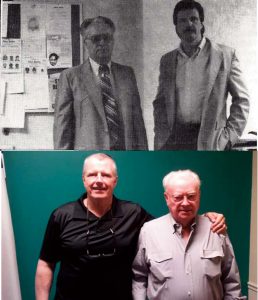
Me and Howard Kelly yesterday and today (1980s and 2018).
Updates:
– Just a few months after his confinement in the Texas Pen, Crebbs was almost beaten to death by fellow inmates. I received no further information about this.
-Just a few months after this beating, Crebbs was stabbed four times by another inmate. He survived. I received no further
information about this.
-After a few years, Crebbs was killed in prison by another inmate. Once again, I received no further information about this, nor did I care. This is a typical end for a psychopath.
******
Hock’s email is HockHochheim@ForceNecessary.com
This is excerpted from Hock’s non-fiction memoirs under the exciting Wolfpack Publishing title Kill or Be Killed. Paperback or ebook Get them here
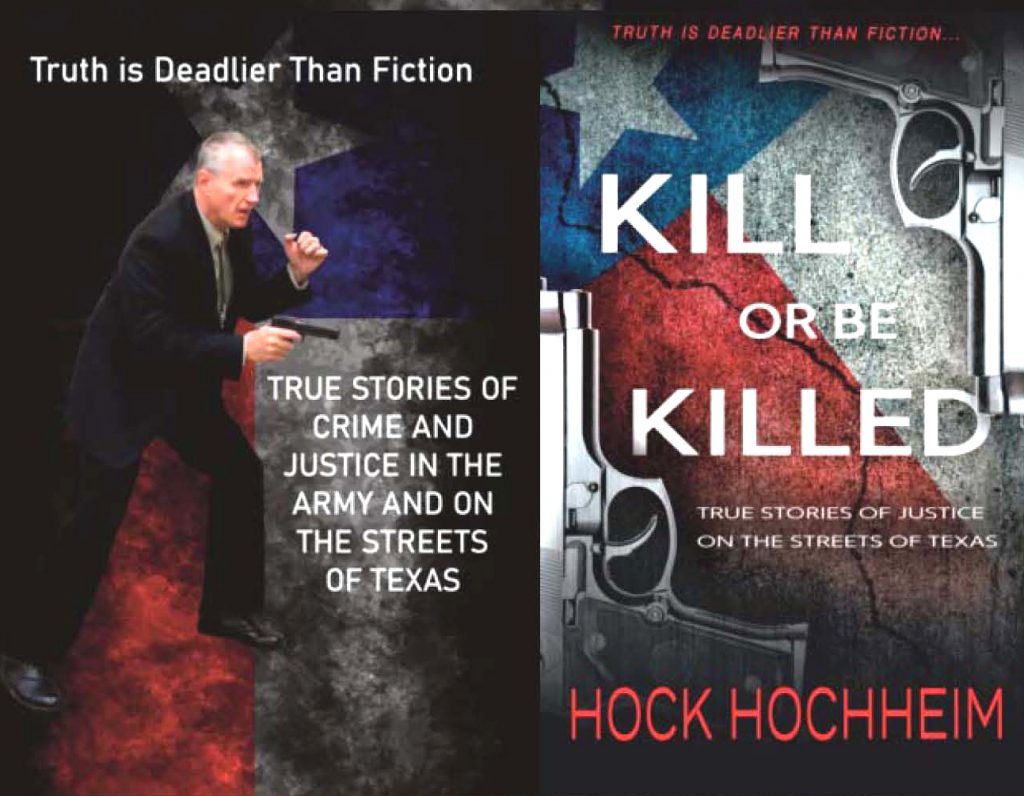
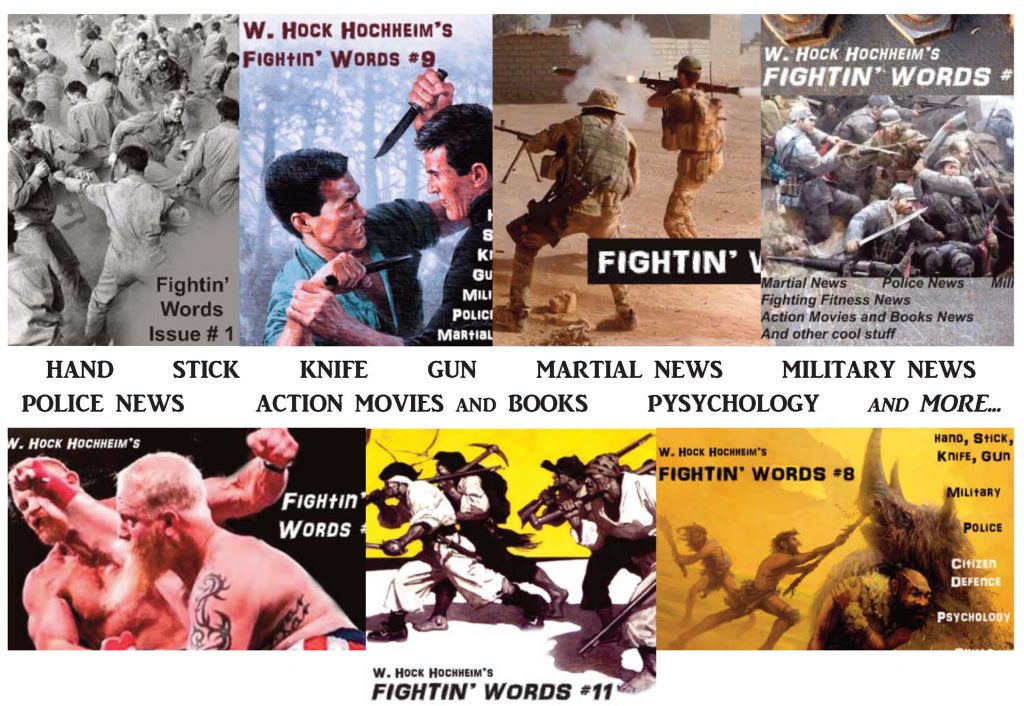
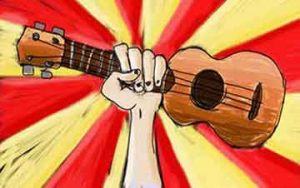
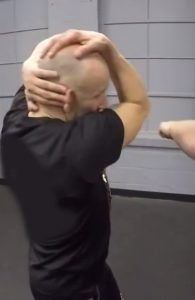
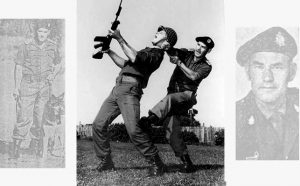
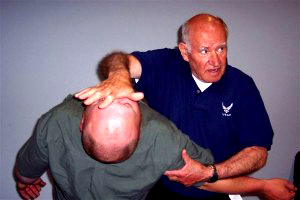
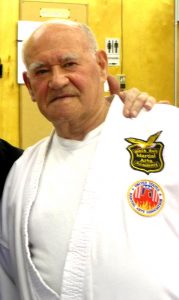
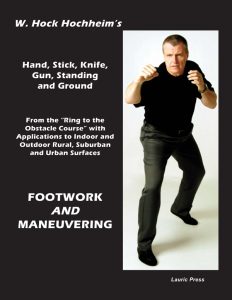
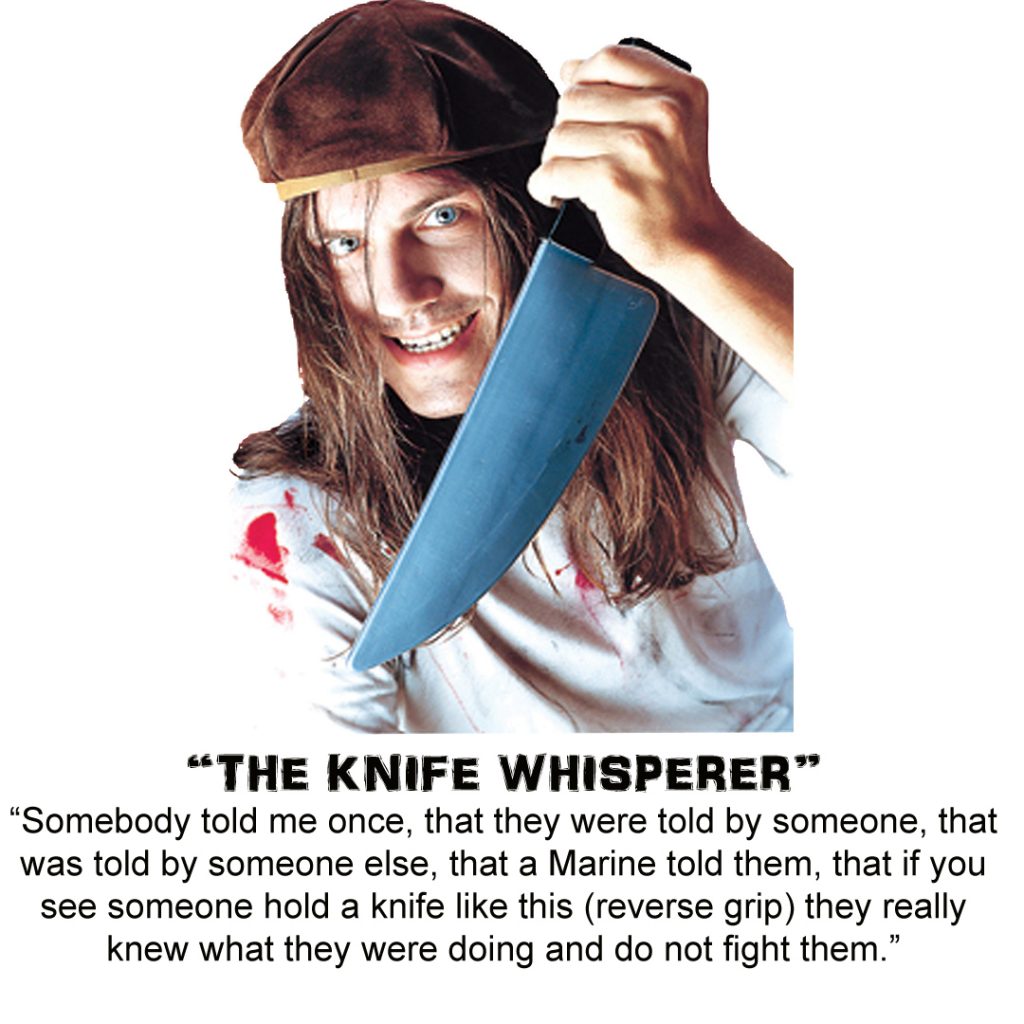
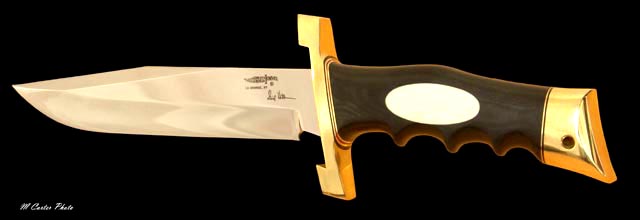 Did Ed Parker demand the knife and all subsequent training be in a reverse grip? I don’t know. It is widely reported that in 1968 Gil designed the Kenpo Knife (sometimes called the Ed Parker Fighting Knife) for his black belt thesis on knife fighting using Kenpo tactics. These tactics are conducive to karate-kickboxing. Maybe some historian reading this will know and tell us. But the reverse grip stuck.
Did Ed Parker demand the knife and all subsequent training be in a reverse grip? I don’t know. It is widely reported that in 1968 Gil designed the Kenpo Knife (sometimes called the Ed Parker Fighting Knife) for his black belt thesis on knife fighting using Kenpo tactics. These tactics are conducive to karate-kickboxing. Maybe some historian reading this will know and tell us. But the reverse grip stuck.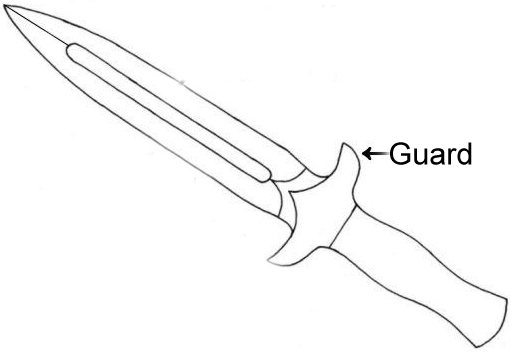 People pick grips for odd reasons too. I read from a guy writing about his grip choice. He said he once saw someone with a training knife, saber grip, stab a mitt and the guy’s hand slipped up on the blade. This made him pick the reverse grip. Really? That? Because if you don’t have a good guard, saber or reverse your hand can slip onto the blade. A
People pick grips for odd reasons too. I read from a guy writing about his grip choice. He said he once saw someone with a training knife, saber grip, stab a mitt and the guy’s hand slipped up on the blade. This made him pick the reverse grip. Really? That? Because if you don’t have a good guard, saber or reverse your hand can slip onto the blade. A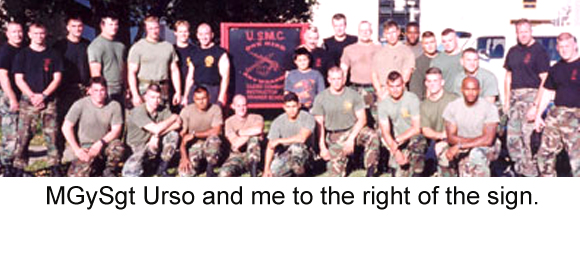
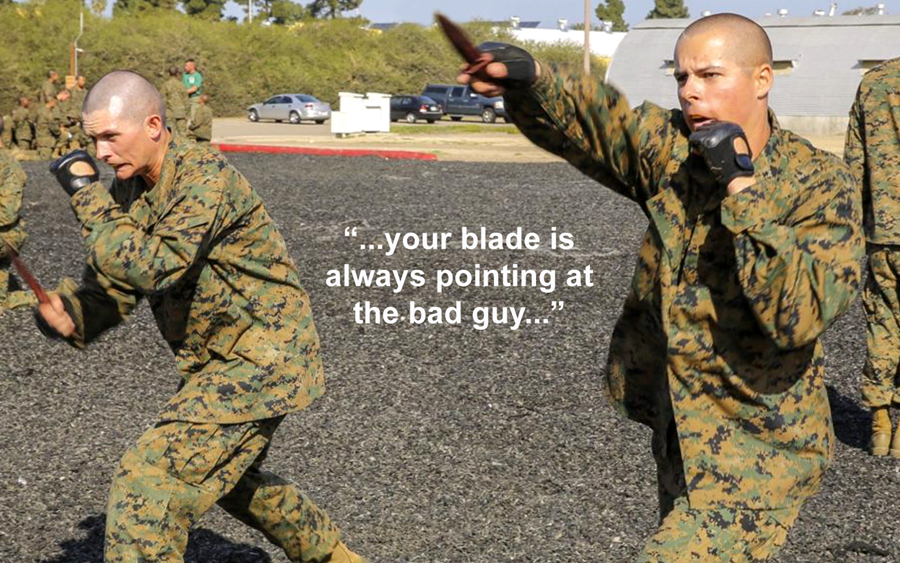
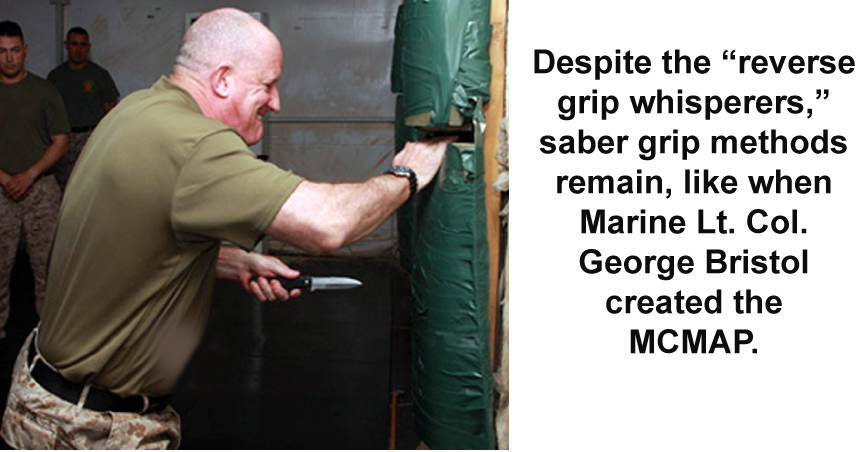
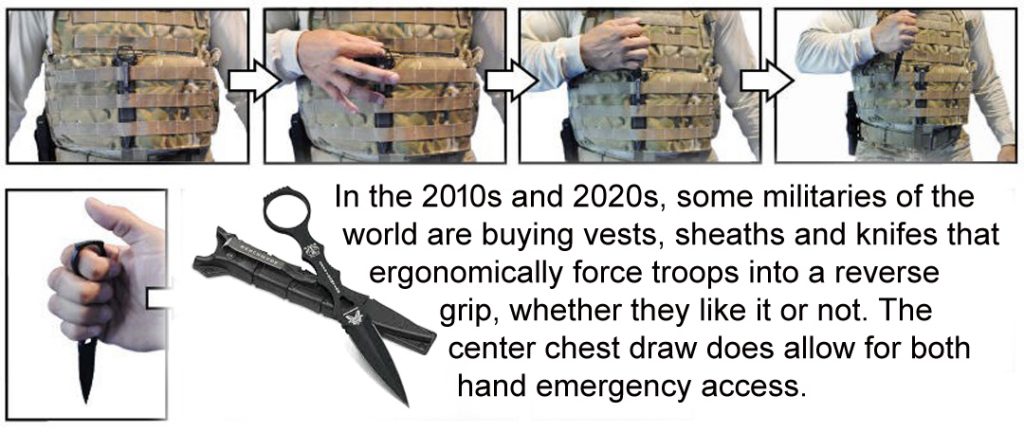
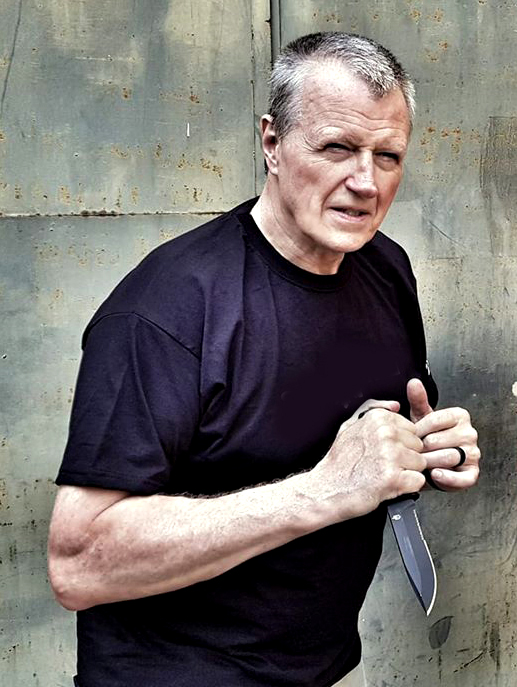 The reverse grip, edge-OUT offers a slashing possibility, an ADVANTAGE that might diminish or end the opponent alone. And a double-edged, or 1/4 or 1/2 or 3/4s or full sharp edge on the outer side is ALWAYS going to be a doctrine advantage. Maximize your survival with the most versatile knife. Reverse grip, edge-in? This is like only putting 2 rounds in a six gun.
The reverse grip, edge-OUT offers a slashing possibility, an ADVANTAGE that might diminish or end the opponent alone. And a double-edged, or 1/4 or 1/2 or 3/4s or full sharp edge on the outer side is ALWAYS going to be a doctrine advantage. Maximize your survival with the most versatile knife. Reverse grip, edge-in? This is like only putting 2 rounds in a six gun.
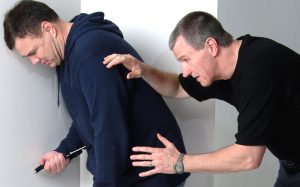
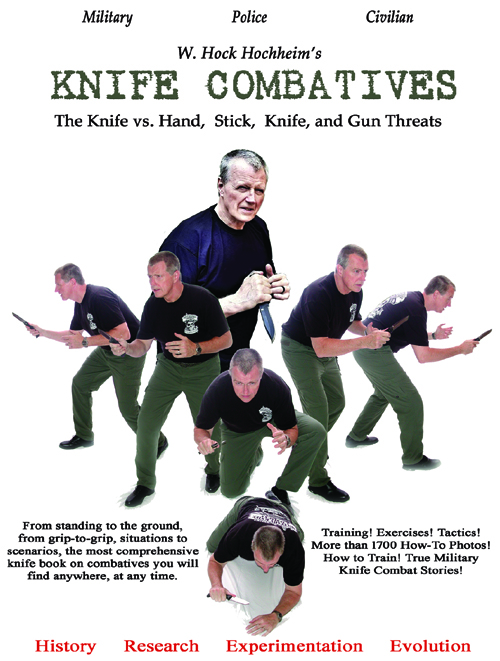
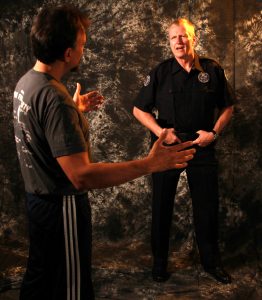
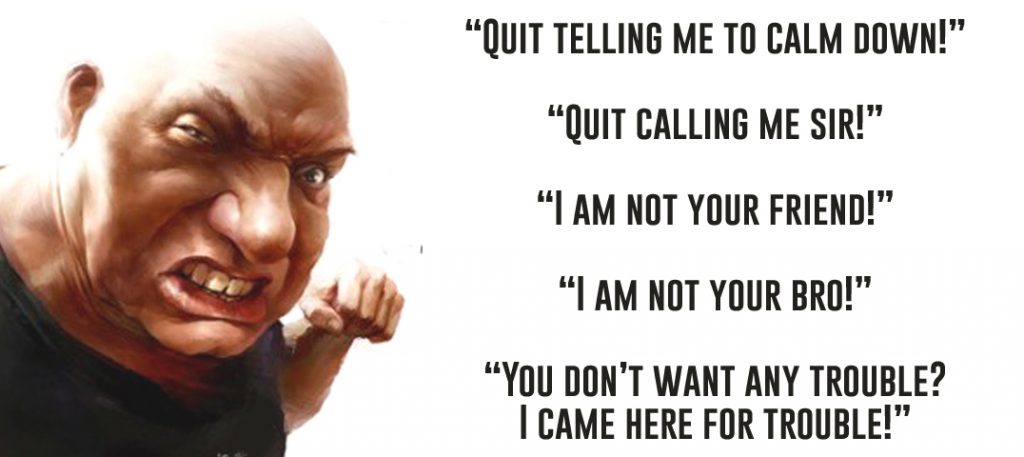
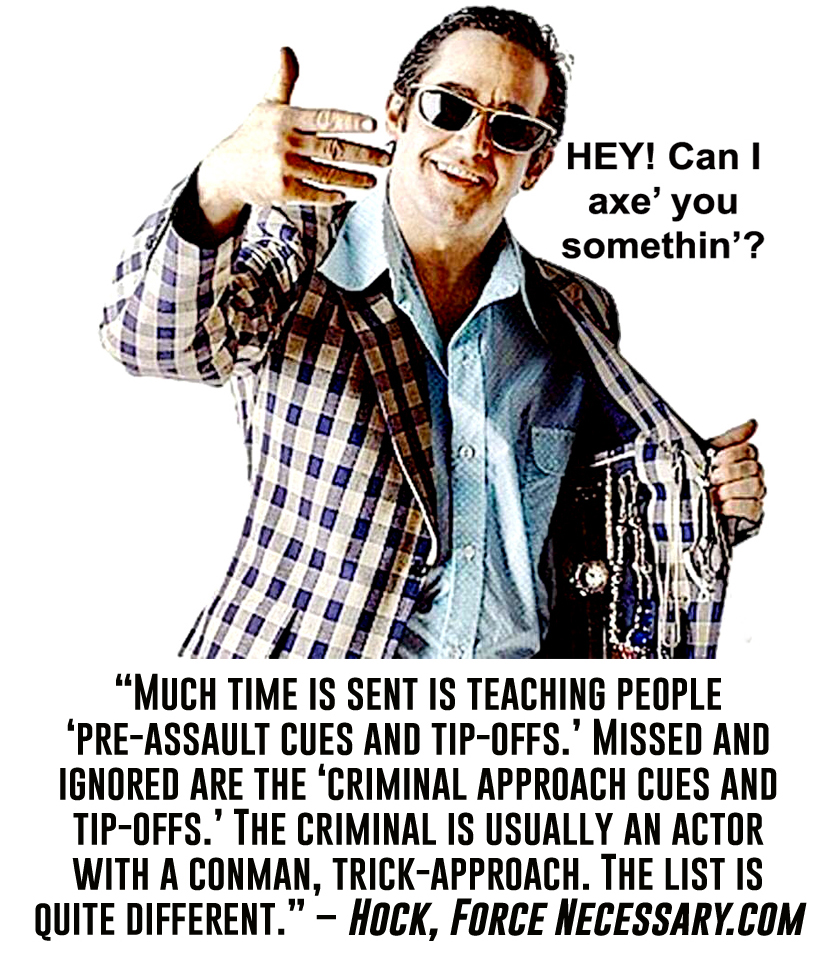
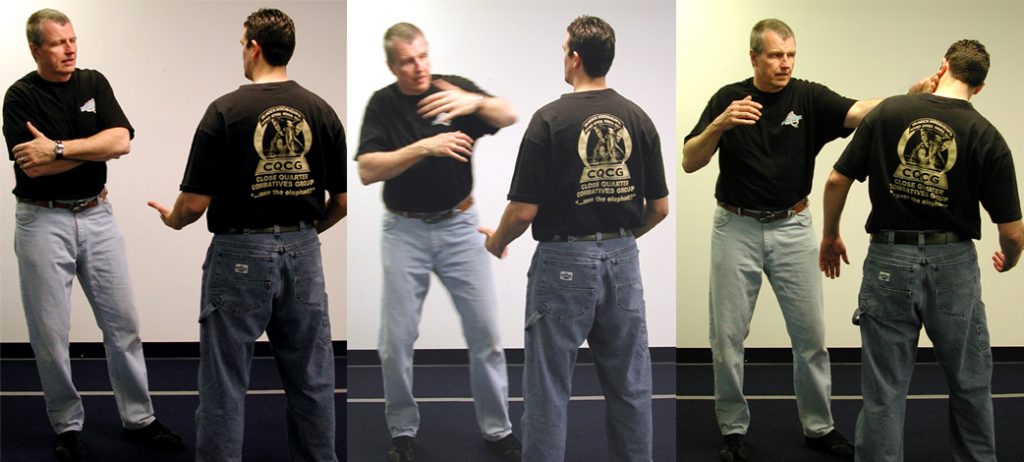
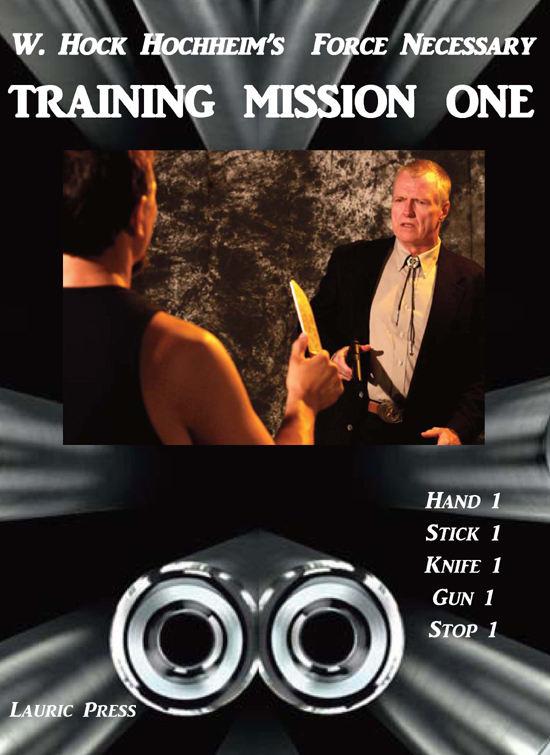
 It was afternoon in August in the early ’80s. Egg-frying, Texas hot. That is to say that if you plopped a raw egg down on the street, it would sizzle in less than a minute or so.
It was afternoon in August in the early ’80s. Egg-frying, Texas hot. That is to say that if you plopped a raw egg down on the street, it would sizzle in less than a minute or so.



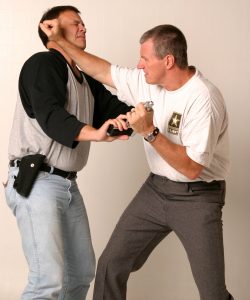
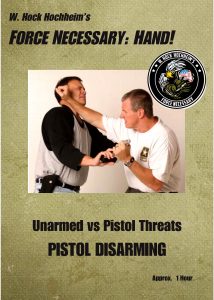
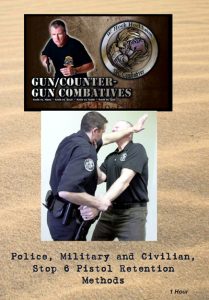
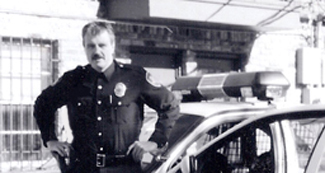
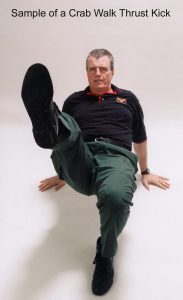

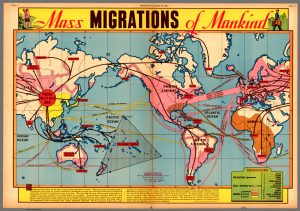

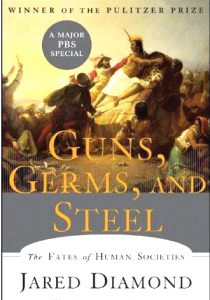
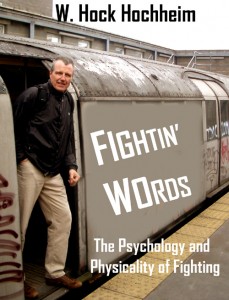

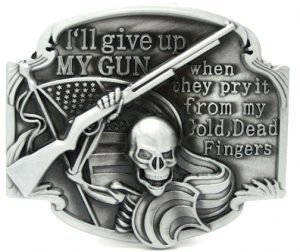
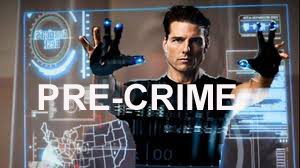
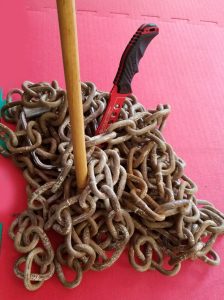
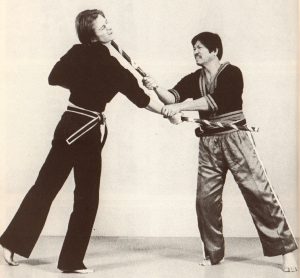
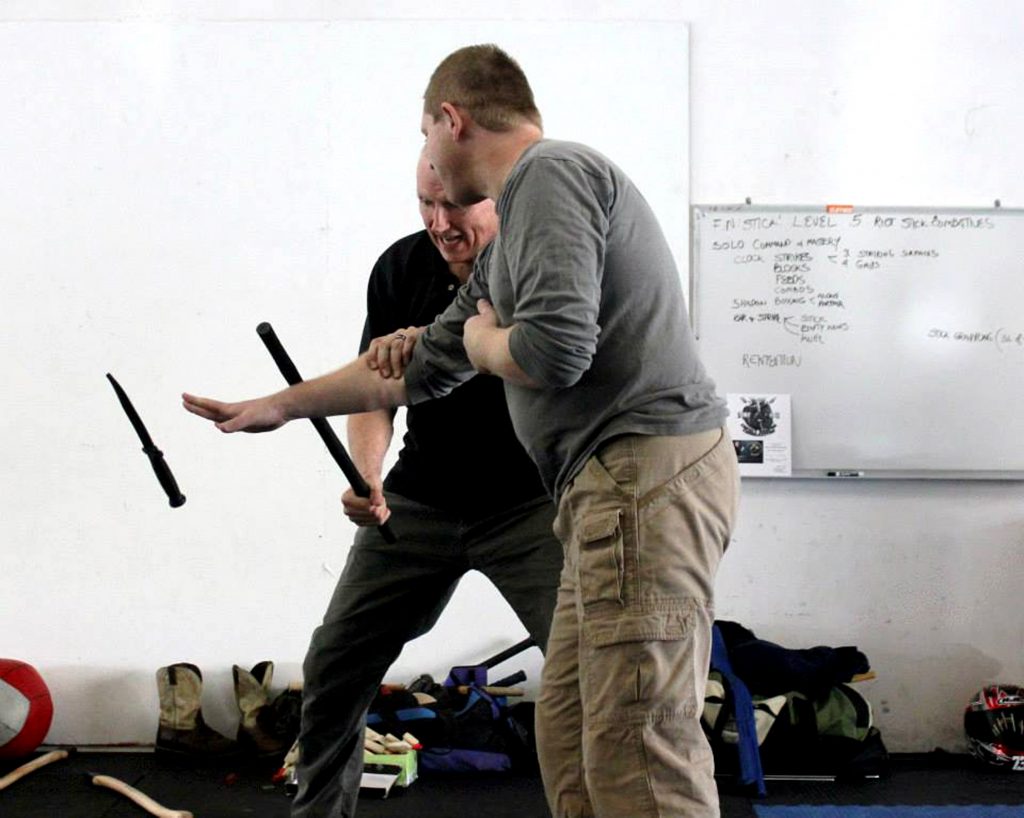
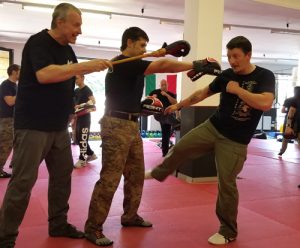
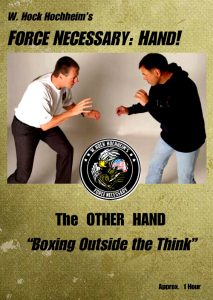
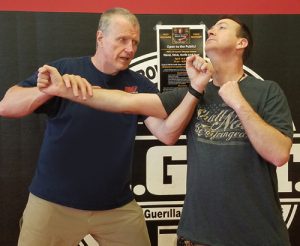
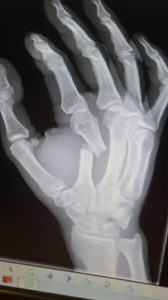
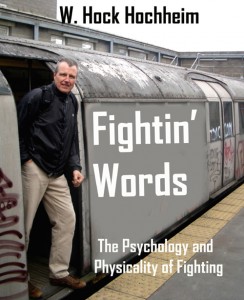
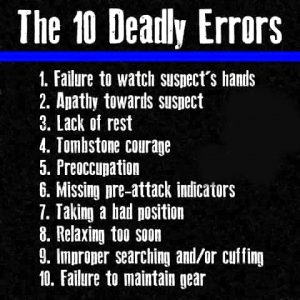
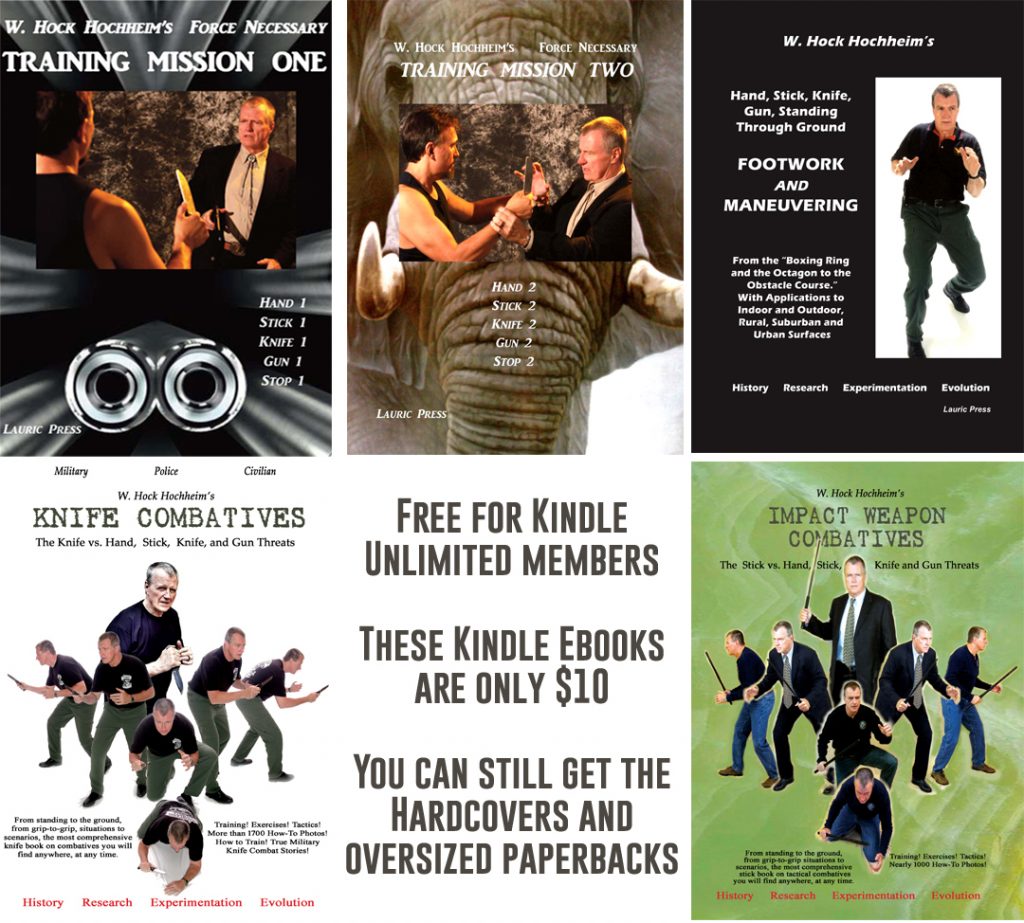
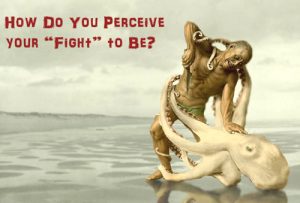
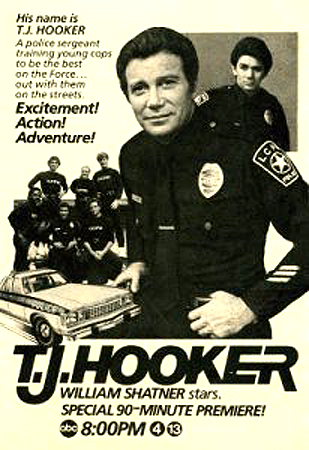 Perceptions. I recently watched the very first episodes of the 1980’s T.J. Hooker cop show, just for sheer nostalgia. I was already a street cop and detective when it was on prime time TV decades ago. On patrol in a giant squad car prowling residential streets, Hooker and his rookie partner drove through a Los Angeles neighborhood and Hooker lectures the rookie about the shame and horror of how people cowered and hid in their houses, fearing the crime on the L.A. streets. That was 1981! “They” were already scaring the bejesus out of you back then. Of course that was dramatic for a TV pilot, but these fear ideas fed and still feeds people today. Perceptions.
Perceptions. I recently watched the very first episodes of the 1980’s T.J. Hooker cop show, just for sheer nostalgia. I was already a street cop and detective when it was on prime time TV decades ago. On patrol in a giant squad car prowling residential streets, Hooker and his rookie partner drove through a Los Angeles neighborhood and Hooker lectures the rookie about the shame and horror of how people cowered and hid in their houses, fearing the crime on the L.A. streets. That was 1981! “They” were already scaring the bejesus out of you back then. Of course that was dramatic for a TV pilot, but these fear ideas fed and still feeds people today. Perceptions. 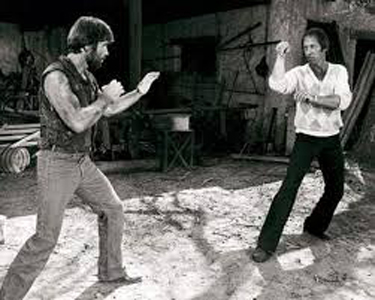 Same with fights. Remember back when Chuck Norris or Claude Van Damme would kick a bad guy down? The bad guy would crash and the Chucks and the Claudes would just stand there, in a poster-boy, fighting pose, maybe bouncing up and down, waiting for the serial killer or hit-man to stand back up and continue the classic fight. Art imitates life and life mimics art. How many people actually, waited for bad guys to stand back up up? That was the “movie fight” until Steven Seagal came along and started breaking arms. How many crimes involve two guys standing in fighting stances like in a boxing ring?
Same with fights. Remember back when Chuck Norris or Claude Van Damme would kick a bad guy down? The bad guy would crash and the Chucks and the Claudes would just stand there, in a poster-boy, fighting pose, maybe bouncing up and down, waiting for the serial killer or hit-man to stand back up and continue the classic fight. Art imitates life and life mimics art. How many people actually, waited for bad guys to stand back up up? That was the “movie fight” until Steven Seagal came along and started breaking arms. How many crimes involve two guys standing in fighting stances like in a boxing ring? 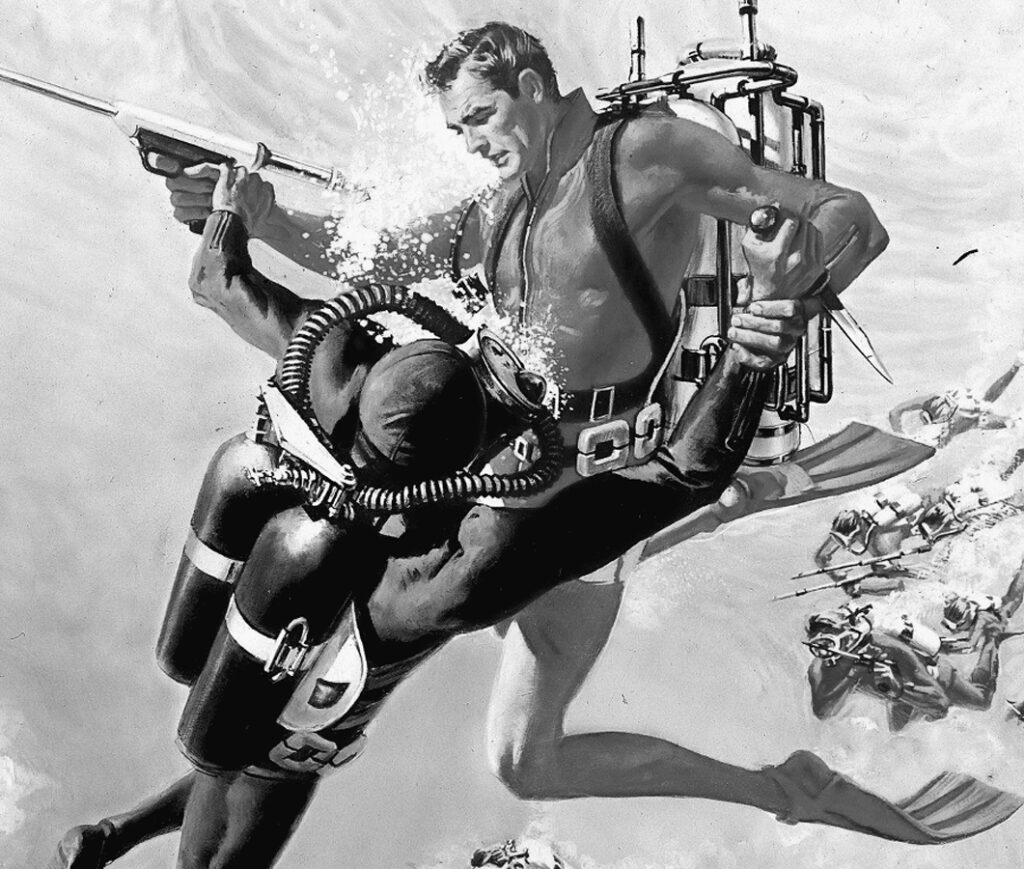 least aware they could be fighting absolutely anyway, anywhere in this hand, stick, knife, gun world. Inside or outside houses and business, on tile floor, rugs, cement, dirt, grass, mud, tar. I have never fought anybody underwater, though. HA! Should I train for that too? (Though I know of some cops fighting people on the ankle-deep and waist deep fringes of oceans and lakes.)
least aware they could be fighting absolutely anyway, anywhere in this hand, stick, knife, gun world. Inside or outside houses and business, on tile floor, rugs, cement, dirt, grass, mud, tar. I have never fought anybody underwater, though. HA! Should I train for that too? (Though I know of some cops fighting people on the ankle-deep and waist deep fringes of oceans and lakes.)